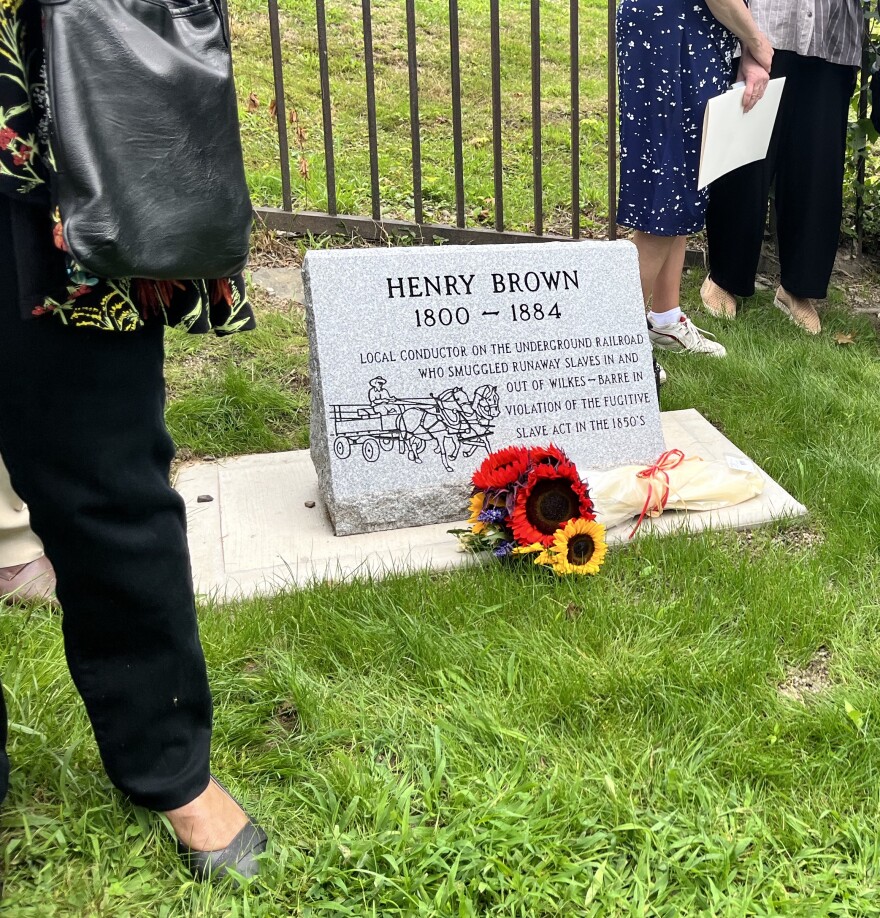In the 1800s, Henry Brown drove a hay wagon from southern Pennsylvania to Montrose, stopping in between at his Wilkes-Barre home. Beneath the hay hid enslaved people escaping to freedom.
Brown, a conductor on the Underground Railroad, died in 1884 and was laid to rest in unmarked grave in Wilkes-Barre City Cemetery.
That changed Saturday when a group of local organizations focused on preserving history and lead by the Shawnee-Fort Chapter of the Daughters of the American Revolution worked together to honor his life with a marker.
"We stand on hallowed ground here," said Wilkes-Barre City Council member Tony Brooks, director of the Wilkes-Barre Preservation Society and curator of the Zebulon Butler House Museum.
Brooks stood at a music stand in front of the marker alongside the fence that separates the city cemetery from Hollenbeck Cemetery. Saturday's ceremony began with a prayer from the Rev. Dr. Robert Zanicky, minister of the First Presbyterian Church in Wilkes-Barre.
"We stand here this day next to a man who deep in his soul knew right from wrong, good from evil," he said. "Here lies a man of faith and conviction. Henry Brown, a free Black man, who along with precious few others stood against the social, cultural grain of slavery and conducted himself with courage in defiance of the wrong and helped to secure the liberty of Black slaves onto a place free from the ... inhumanity of slavery."
Brown’s role as a conductor was detailed in a profile of his daughter in a 1938 edition of the Times Leader newspaper. He would hide freedom seekers in the basement of his Northampton Street home. It was accessible through a trapdoor in the family’s middle room.
Brown worked with William Gildersleeve, a white abolitionist. Gildersleeve’s third great-granddaughter, Melanie Harwood, helped unveil the marker on Saturday, Aug. 12. Engraved on the gray stone is a man driving a horse drawn carriage and words honoring his violation of the Fugitive Slave Act of the 1850s.
Auditor General Tim DeFoor attended the dedication. He’s the first African-American in Pennsylvania history to win a non-judicial statewide election. He said most families have a family story teller. For Henry Brown, that was Emerson Irving Moss.
"We're not only here to honor Henry Brown, but we're also here because of Emerson Moss, telling the story of African American History in the Wyoming Valley," DeFoor said.

Moss’s niece Constance Wynn founded the city’s RACE (Rediscovering Ancestry Through Culture and Education) Team in 1996 to promote local Black history. She said her uncle worked alongside eight people to write the history book “African Americans in the Wyoming Valley," which includes Brown’s story.
"They all tried to work to make certain, certain people's names were in this book," said Wynn on the cusp of tears. "So they wouldn't ever be forgotten ever again."



